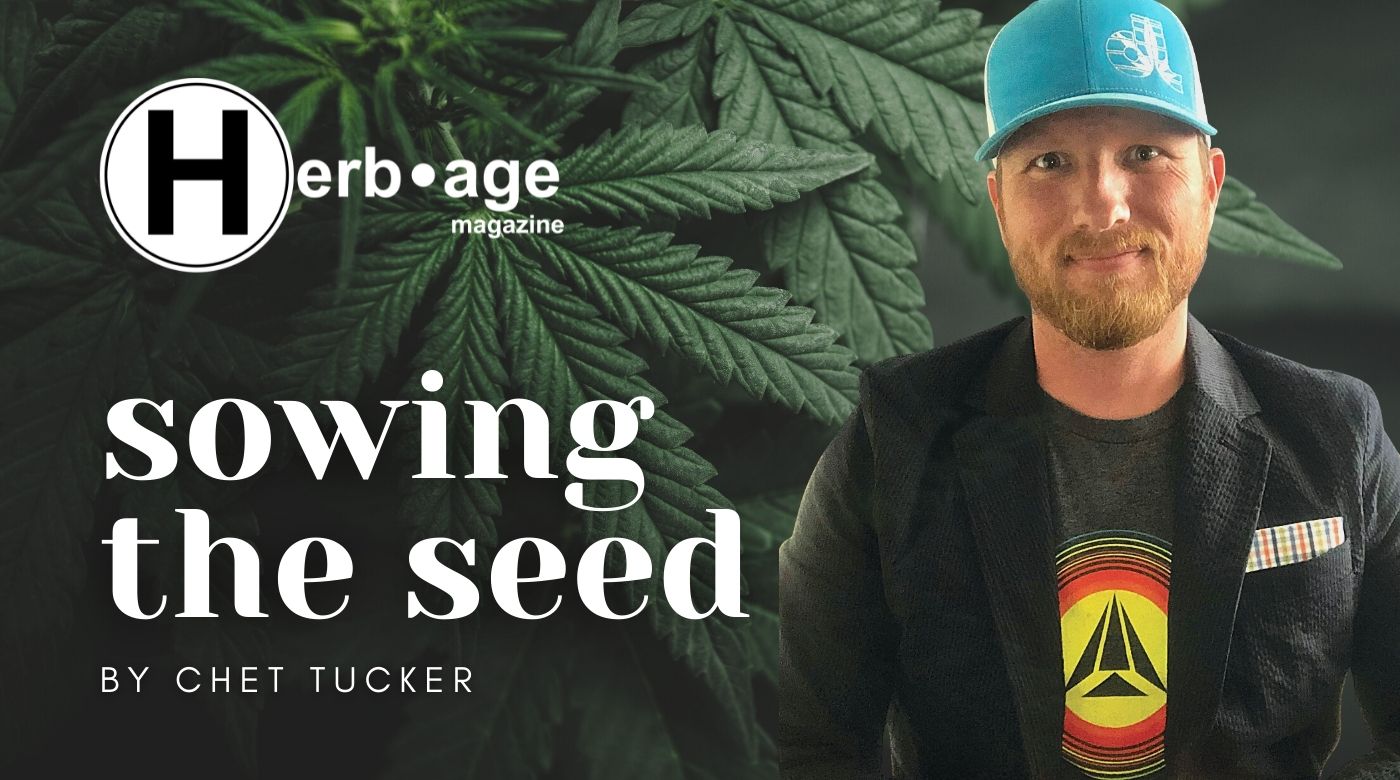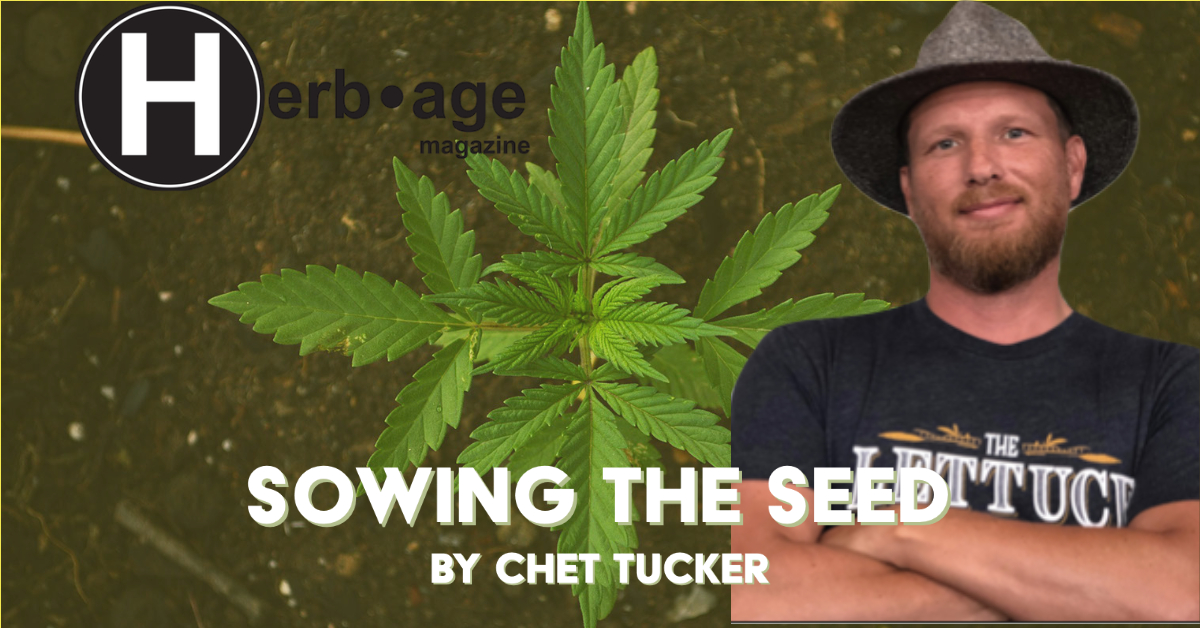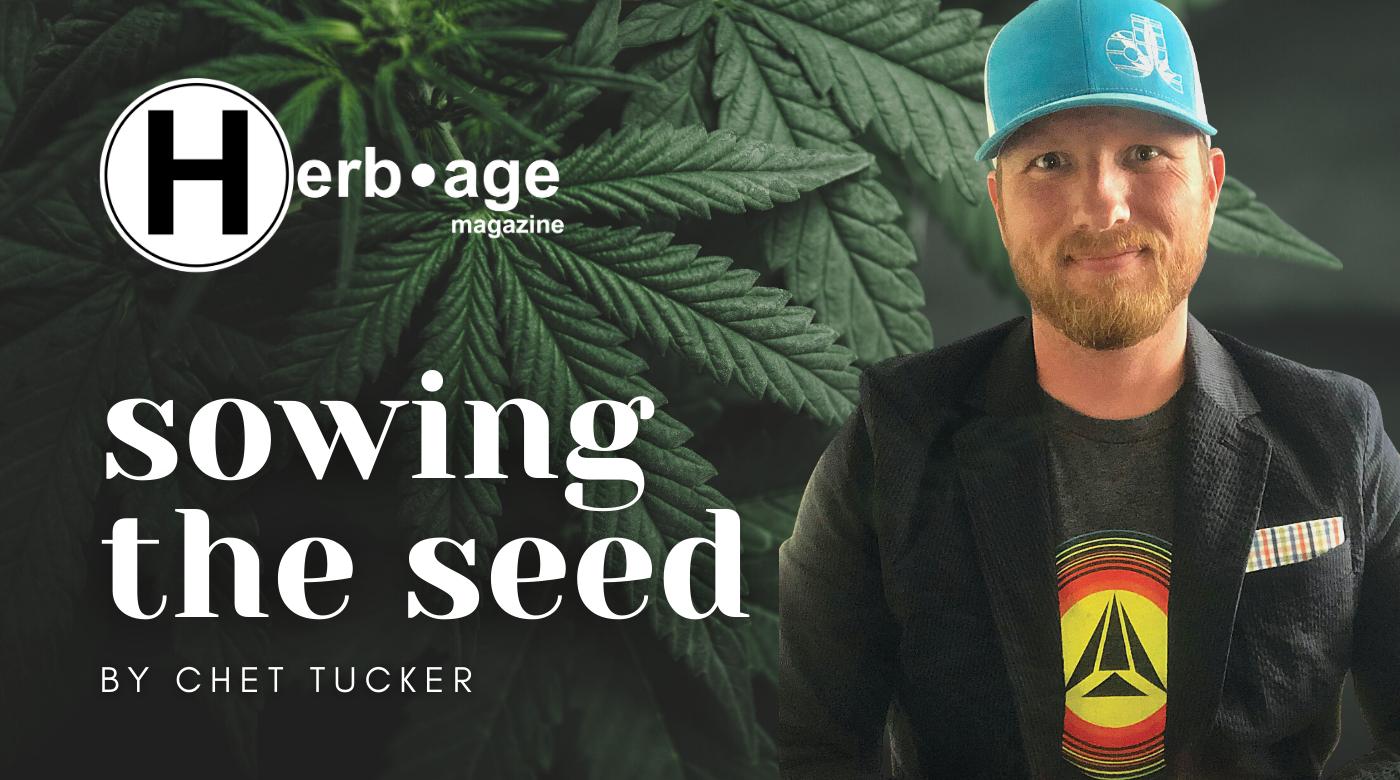by Chet Tucker
For those just picking up Herbage and reading for the first time, we’re glad you’re here. The monthly editorial, “Sowing the Seed”, is a journey from seed to market and we hope you find it as a simple guide along the way. So, we’ve covered genetics, soil and mediums, “food”, water, and light to this point. Next, we jump forward a bit as we move to nurturing the nature of cannabis. As the plant moves from a baby, to a teen, to its flowering stage, we’ll dive into what can make or break your harvest at what may be considered the most crucial stage in the process of growing cannabis. From pests to mold to the unforeseen, it “ain’t always easy being green”.
First, the long list of pesky pests that can alter or destroy your plants can vary from region to region and certainly tougher to battle with outdoor growing conditions. From aphids, to spider mites, caterpillars, grasshoppers, crickets, inchworms, fungus gnats, and the many colored flies, it’s important to research what each of these look like both with the naked eye and under a magnifying or microscope glass. The larger the crop, especially outdoors in a region such as the stormier and more humid Oklahoma, the more pest management must occur. Obviously, pest management should never include harmful pesticides which completely goes against the desire for organic plant based medicinal consumption. Traces of pesticides will show up in testing and should be avoided when managing the pests in your grow environment. Alternative combatants include growing “companion” plants (lavender, dill, basil, chamomile, etc) in the environment, along with the good pests that feed on the bad ones such as ladybugs and praying mantises. Depending on your pest issue, research the best ways to not only quickly identify what pest (they are often microscopic ) is affecting your plants but what organic methods can be used to eradicate them.
Next, you have powdery mildew/mold (PM), stem and bud rot, as well as other environmental issues that can cause hermaphrodites (herm) and undesired seeds. One of the first combatants used to reduce or eliminate PM or bud rot is air circulation. Most indoor grows will be stacked with fans and a ventilation system that is consistently removing the hot or humid air and pumping in fresh air, ideally with healthy levels of CO2. You want as many leaves “moving” from the circulation of air and strong enough to help build the strength of the stalks that work to better root the plant. Conditions that remain too damp are big which means you should avoid overwatering and leaving the plants to sit in conditions that are overly humid. Dehumidifiers are a critical piece of equipment to keeping the humidity at proper levels because each stage of the plant reacts differently to its desired environment Defoliating plants properly are also a helpful way to mitigate the risks of PM and rot so be methodical in your methods to keep as air circulation in the grow environment.
So, even with the right genetics, soil or alternative medium, light, water, and nutrients, the tough-to-control variables can affect your crops. Light leaks from other rooms, exit signs, radios, and alarm systems can also alter your crops so ensure that your environment is properly sealed and insulated and that when you eradicate pests or PM/rot, ensure that you do a thorough clean between moving your next set of flowering cannabis into the space. It’s a tedious and detailed process but it can be easily managed by maintaining a checklist and keeping an eye on the finer details of the plants and their environment. Next month, we’ll get into the final stages of pulling the crops down and then into the curing, packaging, and taking your harvest to market.



